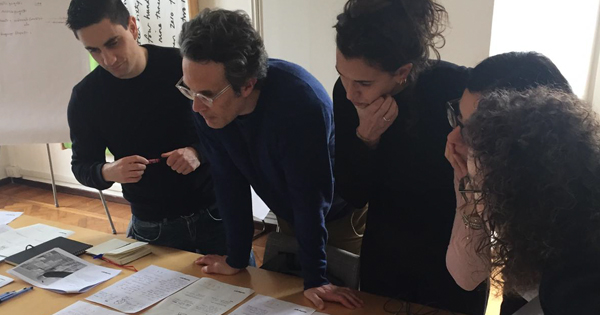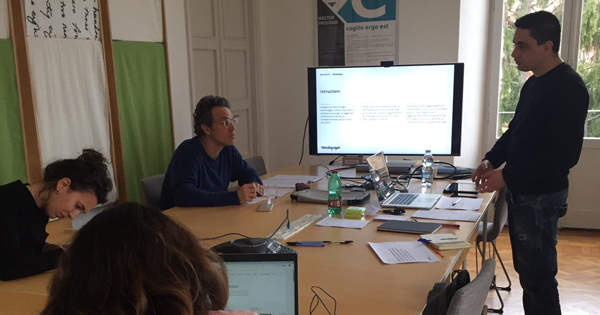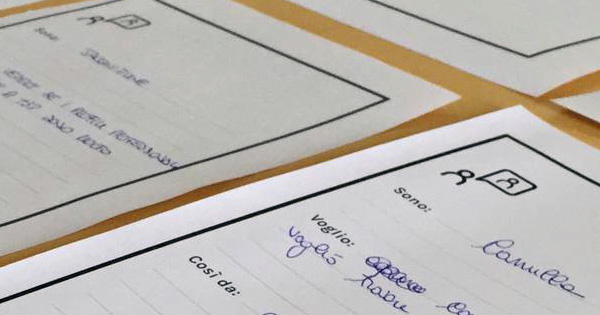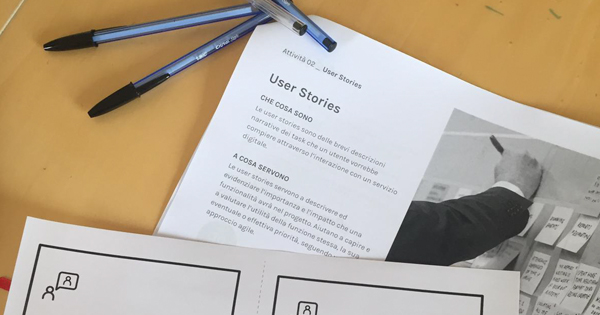TONIDIGRIGIO PROFESSIONALS IN COMMUNICATION
FOLIO →
There is nothing more analogue than a website
There is nothing more analogue than a website
If it is true that communication corresponds to behavior and that corporate culture influences behavior, it is also true that good communication cannot be achieved without the direct involvement of corporate personnel. Thinking of delegating an integrated communication system to third parties and adapting to their ideas no longer works. On the contrary, intervening, participating, and co-creating a communication process, with the support of a third party, can be the solution to a number of problems related to lack of funds, resources, and, above all, time.

Every communication project tells a story
Let us return for a moment to the concept of a third party. Delegating a communication project to an agency is very risky indeed. How can we be sure that the agency will be able to communicate exactly what we want to say and in the way that best represents us? Is an initial brief and an initial get-to-know-you meeting enough to transfer everything we need to structure a communication strategy that really works? It will certainly be a huge leap of faith, but the risk of running into the wrong investment and, before that, dissatisfaction, is certainly high.
However, all is not lost! Fortunately, there are numerous methodologies and approaches that can capture the needs of every company and, since every communication project tells a story, the user story methodology might be one to consider.

There is nothing more analogue than a website
Would you ever have guessed it? And yet it is indeed true: a website is a very useful communication tool under many aspects, and it is the result of a process that starts long before it goes online and develops over time through a series of reflections and strategies.
There are many ways to avoid developing pre-packaged websites, to which it is sufficient to replace logos and colors and insert 'innovative' content. There are many ways, and one method that works very well is that of user stories, which we try to recount in this note.
The user journey and storytelling methodology
Fans of creative writing will surely have heard of the so-called hero's journey. For everyone else, we can say that in every short story, novel and writing exercise that really works, there is a hero, i.e. a protagonist, who in order to achieve his goal must make a journey from the known world to an unknown world, often with the support of a helper. Entering an unknown world is only a plausible action if it is supported by a strong motivation; and it is precisely the motivation of the hero - and thus of our user - the subject of the methodology of the user stories, which, quite simply, we could describe as follows:
- Identification of Personas
- Description of user stories
- Sorting of Identification Cards
The methodology is only effective if it is implemented in a co-design perspective. This means that in order to make it work, it will be necessary to organize a teamwork session, during which the different actors will be invited to discuss the existing criticalities in a possible digital service and, at the same time, to identify possible solutions together, following a guided path.
Identification of Personas
Building a website means tracing paths in a given virtual space. Paths designed for users, so that they can retrieve information and content to satisfy a need quickly and easily. The prerequisite of the methodology, therefore, is the identification of the so-called Personas, that can be described as a series of stereotyped profiles capable of describing the types of customers who use or will use a website or any other digital product we structure.
The identification of Personas facilitates the generation of ideas starting from existing needs: they can be used to identify and put oneself in the user's shoes, to devise new functions and services that meet his needs, isolating his motivations, expectations, and attitudes.

Description of user stories
Once you have identified the Personas who will travel in search of information on the website, it is time to think about the path they will take.
User stories are short narrative descriptions of the actions a user would take when interacting with a digital tool. They serve to describe and highlight the importance and impact of each feature. They also help to understand and evaluate the usefulness of the feature itself and its possible or actual priority.

Card Sorting for elements identification
Once the user profiles are identified and the paths they will have to take to reach their goals are structured, it is time for Card Sorting.
This third and last activity is the one most related to the elements that accompany the Personas during their paths, the so-called helpers. This method makes it possible to identify all the elements useful for organizing information within a content hierarchy: title, subtitle, texts, possible photos, the possibility of inserting infographics, selection filters, pop-up menus, operating logic, navigation, and much more.
The importance of participation for good communication
These methodologies start from a very strong assumption: nobody knows a company better than the people in it. Any agency can develop a website, but creating a functional, useful, and efficient tool could be a difficult process if the company does not want to get involved.
Instead, through a half-day workshop it is possible to:
-
Define all the content that will populate a website;
-
Identify the user who will navigate the site and his main needs;
-
Structure an intuitive and fast navigation path;
-
Define the elements useful for information transfer;
-
Elaborate a strategy based on valuable content.
The advantage of being able to do all this during a workshop also allows the creation of a strong relationship between the staff and the communication agency, as well as fostering idea generation and personal growth for all participants. At the end of the day, the company will know exactly how its new website will be structured and the agency will be able to work at its best, optimizing costs and time. Trying to believe!
RELATED PROJECTS

